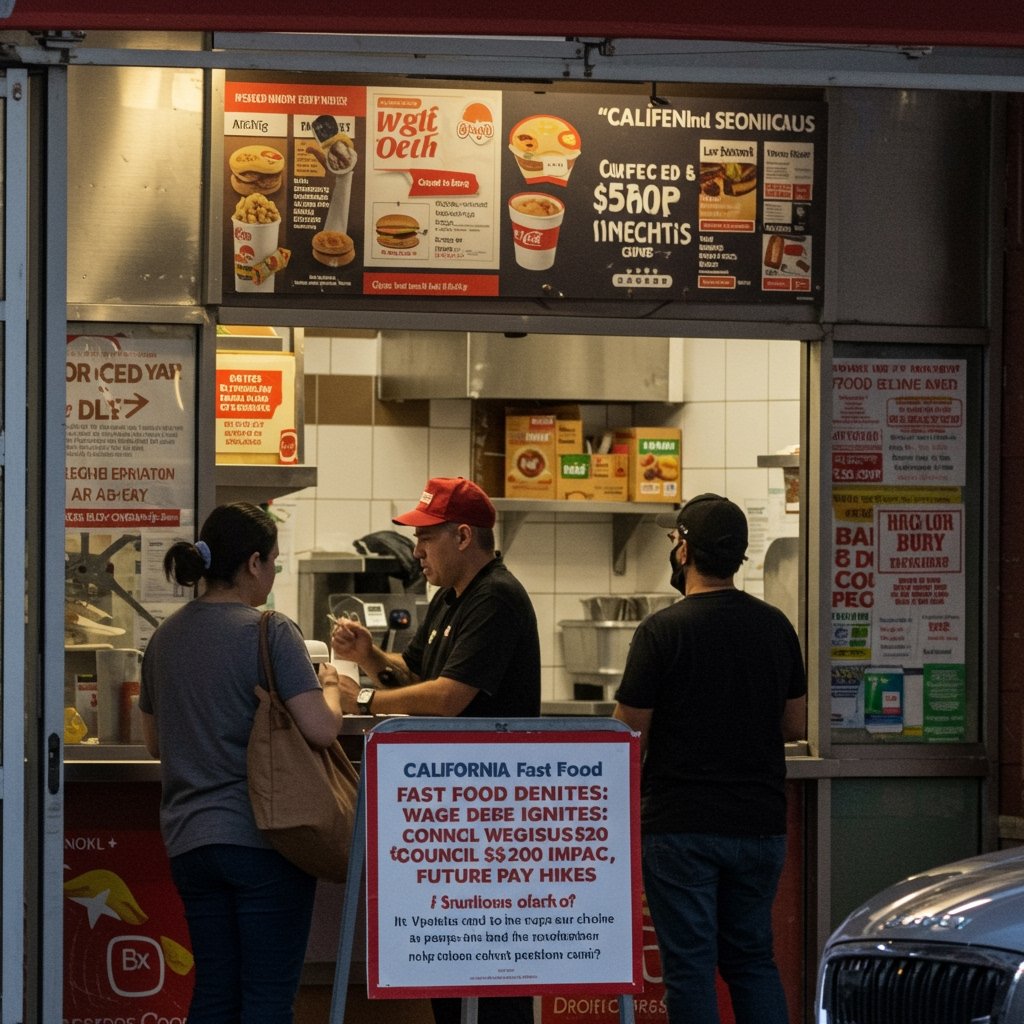California Fast Food Council Grapples with $20 Minimum Wage Impact, Future Adjustments
Sacramento, CA – Five months after the landmark implementation of Assembly Bill (AB) 1228, which established a $20 minimum wage for fast food workers across California, the California Fast Food Council convened in Sacramento on March 26, 2025. The pivotal meeting brought together stakeholders from across the industry – including franchise owners, corporate representatives, labor unions, and state officials – to undertake a critical evaluation of the economic repercussions observed since the new wage floor took effect.
The council’s primary agenda focused on two interconnected areas: assessing the tangible economic impact of the $20 minimum wage on fast food franchise owners and deliberating on potential future wage adjustments. AB 1228 not only set the initial $20 rate but also mandated the creation of the Fast Food Council, granting it authority to make annual adjustments to the minimum wage based on the Consumer Price Index (CPI), capped at either 3.5 percent or the annual increase in the U.S. City Average Consumer Price Index for Urban Wage Earners and Clerical Workers (CPI-W), whichever is lower.
Representatives from various industry groups were among the first to present their findings and concerns. Their presentations featured detailed data and anecdotal evidence collected from franchise operators statewide. A central theme of their arguments was the significant increase in operational costs experienced by businesses since the wage hike. Data models and financial statements were shared, illustrating how labor expenses, which typically constitute a substantial portion of a fast food restaurant’s operating budget, have surged.
Industry advocates contended that these cost increases were putting immense pressure on the profitability and sustainability of many franchise locations, particularly smaller, independent operators who may not have the same financial buffers as larger corporate entities. They highlighted that these wage increases layered onto existing economic challenges, such as persistent inflation affecting food costs, supply chain disruptions, and rising utility expenses. The cumulative effect, they argued, was creating an operational strain that necessitated difficult business decisions.
A key concern voiced by industry representatives was the potential for job impacts. They presented projections and early data suggesting that some businesses were exploring or implementing measures to mitigate the increased labor costs. These measures reportedly included reducing employee hours, slowing hiring, automating certain tasks where possible, and, in some instances, considering staffing reductions. While specific numbers were debated, the potential for negative employment consequences was a significant point raised by the industry side.
Conversely, labor representatives and worker advocacy groups presented their perspective, emphasizing the critical need for the $20 minimum wage and advocating for future increases. Their arguments centered on the soaring cost of living in California, particularly in major metropolitan areas like Los Angeles and San Francisco. They presented data on housing costs, transportation, healthcare, and other essential expenses, arguing that even at $20 per hour, many fast food workers still struggle to afford basic necessities in these expensive urban centers.
Labor advocates highlighted the essential nature of fast food workers, particularly recognized during the pandemic, and argued that a dignified wage is necessary for these individuals and their families to live and thrive in the state. They contended that the increased wages were not only a matter of economic fairness but also a vital component of supporting local economies by putting more disposable income into the hands of low-wage workers. They pushed back against the industry’s claims of widespread negative impact, suggesting that businesses have avenues to absorb costs through slight price increases or efficiency improvements without resorting to significant job cuts or detrimental changes to worker hours.
The California Fast Food Council, acting as a mediating and deliberative body, received the extensive presentations and engaged in discussions with both sides. The council members questioned the data presented, sought clarification on methodologies, and explored potential solutions or compromises. The diverse perspectives underscored the complexity of balancing the economic viability of businesses with the need to ensure fair compensation for workers in a high-cost state.
The council’s role is to evaluate this complex data and input before making recommendations regarding future minimum wage adjustments. These future adjustments, tied to the CPI as stipulated by AB 1228, will be crucial in determining how fast food wages evolve annually in California. The debate over the initial $20 impact is thus inextricably linked to the process for setting subsequent wage floors.
The meeting on March 26th was framed as a critical step in this ongoing process. It provided a formal platform for stakeholders to present their data and arguments directly to the body responsible for future wage decisions. The robust exchange of information and viewpoints highlighted the significant economic and social stakes involved for both business owners and hundreds of thousands of fast food workers across the state.
Looking ahead, the council did not make any immediate decisions or recommendations during this session. Instead, they indicated plans for further consultations. This subsequent work will involve a deeper dive into the data presented, potentially seeking additional information, and continued engagement with stakeholders to gain a comprehensive understanding of the wage’s impact and the implications of future adjustments based on the CPI. The findings and eventual recommendations from the California Fast Food Council will significantly shape the economic landscape of the state’s vast fast food industry and the lives of its workforce for years to come.



















